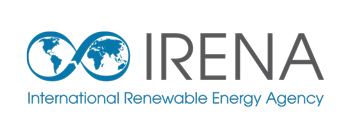 ABU DHABI, United Arab Emirates — According to the first Regional Energy Transition Outlookby the International Renewable Energy Agency (IRENA), published in collaboration with the European Commission today, increased use of renewables also improves affordability and competitiveness by harnessing domestic, cost-effective energy sources across the EU.
ABU DHABI, United Arab Emirates — According to the first Regional Energy Transition Outlookby the International Renewable Energy Agency (IRENA), published in collaboration with the European Commission today, increased use of renewables also improves affordability and competitiveness by harnessing domestic, cost-effective energy sources across the EU.
The Regional Energy Transition Outlook: European Union finds that achieving the EU’s energy transition goals in the coming years will require an accelerating infrastructure integration and expansion, doubling down on electrification with renewables, and strengthening institutional frameworks for integrated energy planning and implementation – with robust enforcement mechanisms to ensure accountability.
“The EU’s global leadership in climate mitigation is more important than ever,” said IRENA Director-General Francesco La Camera, “But delayed action risks higher costs, making strategic investment critical to a successful transition. EU policymakers should pay close attention to affordability, energy price inflation, and the security of energy supplies.”
The Regional Outlook projects that renewable power capacity additions will rise to 122 gigawatts (GW) every year by 2050 – double the current annual level. The EU power sector is expected to generate 70% of its electricity from renewables by 2030, and nearly 90% by 2050.
However, this profound transformation faces critical challenges, notably the need for substantial power sector capacity and infrastructure investment – cumulatively amounting to €5.6 trillion by 2050, which corresponds to nearly 80% of the total GDP of Germany in 2024. On average, €220 billion must be invested each year, representing nearly a 50% increase on current levels.
Investing in modern infrastructure is essential to maintaining the affordability of electricity. As renewables expand, wholesale prices typically decrease, reflecting lower operating costs and reduced exposure to fossil fuel price fluctuations. With targeted investment, a fully decarbonised energy system could deliver greater price stability. Achieving the EU energy transition overall will require total investments of €1 trillion annually by 2050, which corresponds to approximately 6% of EU GDP in 2024.
“Investing in the energy transition within the EU is a no-regrets option”, La Camera added, stressing “the EU economy could grow by 2% annually until 2050 and boost energy sector jobs to nearly 8 million within this decade. By placing low-cost renewables at its heart, the transition can enhance energy independence and deliver affordable, sustainable energy to industry, households, communities, and citizens across the EU.”
Dan Jørgensen, EU Commissioner for Energy and Housing, welcomed the IRENA report, stating: “To fight climate change while strengthening our resilience, we need more renewables, and faster. Homegrown renewables will make us more energy independent as we move away from fossil fuels. They will also create new jobs and drive innovation. This is a clear win-win for the climate, and the economy. This report provides a clear compass for our energy transition. It will help us implement our Action Plan for Affordable Energy which sets an ambitious strategy to cut energy costs while building a clean, competitive, and secure Energy Union”.
The Regional Outlook concludes that despite growing momentum, the pace of renewable technology deployment and penetration is falling short of what is needed to meet the EU’s climate and energy targets for 2030 and the ambition for 2040 and 2050. At present, national implementation across sectors, technologies, and energy carriers remains inadequate. Timely implementation across EU Member States remains a major challenge, calling for integration and coordinated energy planning.
The IRENA report outlines key actions the EU must take by 2030 to stay on track for a net-zero transition:
- Increase renewable energy share to meet – and potentially exceed – the 42.5% target of Gross Final Energy Consumption for 2030 with accelerated electrification and direct use of renewables.
- Ensure that total wind and solar capacity reaches at least 1 100 GW, supported by necessary grid expansion, contributing to a total renewable energy capacity of 1 247 GW – nearly doubling the 640 GW installed by the end of 2023.
- Install at least 46 GW of battery storage capacity to support system flexibility, a vast rise on the 6 GW levels installed by the end 2023.
- Increase electricity’s share of final energy consumption to 33% by 2030, up from 21% in 2023.
- Roll out 51 million heat pumps in buildings, scaling up deployment at an annual growth rate of 7% beyond the 21.5 million units installed by the end of 2023.
- Expand electric mobility, reaching 100 million electric vehicles by 2030 (up from around 12 million in 2023), along with a robust charging infrastructure network.
- Develop a regulatory and investment framework to support regional hydrogen hubs and large-scale electrolysis deployment.
IRENA EU Energy Transition Outlook was developed in close collaboration with the European Commission and EU Member States. It offers key insights to support informed decision-making in the refinement and implementation of policies, helping to ensure a secure, competitive, and climate-aligned energy system.
Tagged with IRENA




